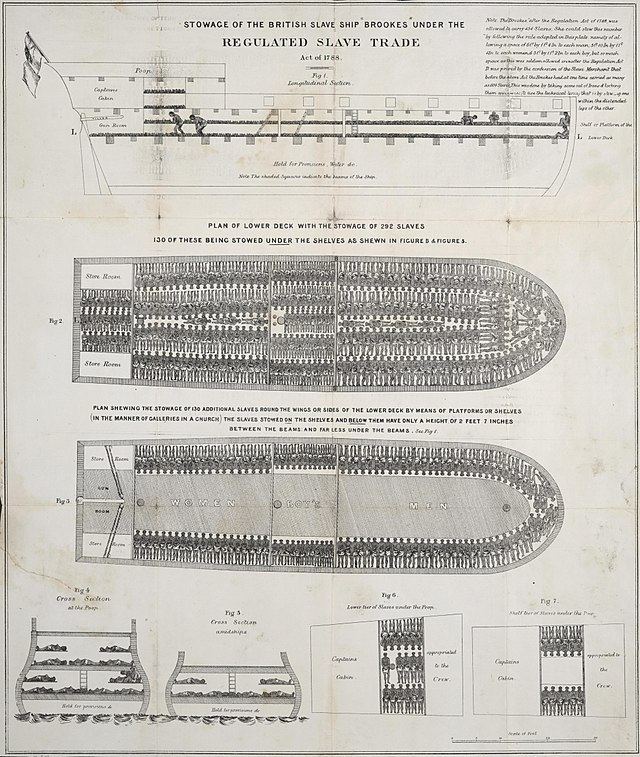Name Lord Ligonier Construction started 1763 | Operator Thomas Davies Launched 1765 | |
 | ||
Owner 1765, James Debatt, Daniel Vialars Route Annapolis, Maryland to London, England to the Gambia | ||
The Lord Ligonier was an 18th-century British slave ship built in New England that in 1767 unloaded slaves in Annapolis, Maryland. The ship was made famous by Alex Haley's novel, Roots: The Saga of an American Family, as the ship that brought his ancestor, Kunta Kinte, from the Gambia to the colonial United States.
Contents
Construction
Lord Ligonier was originally laid down in 1763. The ship was built for hauling cargo such as slaves, tobacco, spice, and lumber. In June 1765 the ship's owner, Horace Andrews, hired a crew of 40 men and a captain named Davies.
The ship had six decks in all, four for carrying slaves and two for hauling spice, lumber, and tobacco. Lord Ligonier was a sailing ship, built to weather Atlantic storms. It could carry 170 slaves, 40 crew members, and various amounts of other cargo. Although it could carry 170 slaves if they were packed in sideways, the ship's capacity was only 140 slaves when they lay on their backs.
1767 voyage and Roots
A surviving advertisement records the arrival of the ship with a cargo of slaves at Annapolis in 1767. The ship was the basis for Alex Haley's assertion in his novel, Roots: The Saga of an American Family, that his supposed ancestor, Kunta Kinte, was brought on that voyage. The miniseries based on the book invented a failed slave uprising during the voyage.
This is the only voyage of the Lord Ligonier recorded in the Trans Atlantic Slave Trade Database (Voyage 75775).
Fate
The Lord Ligonier's subsequent fate is unknown. There is proof that it sailed on another slave voyage but nothing is known of it. The Lord Ligonier was probably sold for scrap lumber after the owner's death.
